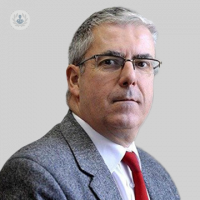Basal cell carcinomas: best treatment for skin cancer
Autore:Basal cell carcinomas are by far the commonest form of skin cancer, but they are also one of the least harmful forms.
In his latest article, Professor Andrew Leslie Wright, a consultant dermatologist in Bradford and Leeds, talks to us about this form of skin cancer, what causes it and the treatments options available for you if you have had a recent diagnosis.

What causes basal cell carcinomas?
Basal cell carcinomas, also known as basal cell skin cancer, are predominantly caused by ultraviolet exposure - the more exposure you have to ultraviolet light the more likely you are to get a lesion. They are, therefore, most common in people who are fair-skinned, work outdoors and do a lot of outdoor activities or regularly use sunbeds.
The risk of developing one increases as you get older. They most commonly appear on exposed areas, particularly the head and neck but can appear on almost any body site.
How fast do basal cell carcinomas spread?
They grow quite slowly, probably by less than 1 mm per year. They rarely, if ever, spread to other parts of the body (though those at risk can develop multiple lesions). They can, if left untreated, continue to grow and reach the size of several centimetres.
Although not considered serious lesions, the areas they most commonly occur - that is the head and neck - means that treatment delay can, particularly if they appear around the eyes or nose area, mean that their surgical removal may be complex and difficult. It is therefore important to recognise them at an early stage. Initially, lesions can have a very subtle appearance starting as a small blemish or spot but they continue to grow steadily and change.
What does basal cell carcinoma look like?
Basal cell skin cancer appears first as a lesion. The typical lesions are red, shiny and domed but lesions may be flat and sometimes appear like patches of eczema. The lesions may crust or bleed and such signs are important pointers to seek advice from a healthcare professional.
How is basal cell skin cancer treated?
If a diagnosis of basal cell carcinoma is considered then referral to a specialist is usually recommended. If the diagnosis is confirmed, either a small biopsy or full removal of the lesion will be planned. For larger lesions, there are a variety of treatments which include:
- surgical removal
- treatment with various creams
- a form of light therapy (photodynamic therapy)
- scraping, burning or freezing lesions
- sometimes, the use of X-ray treatment
For larger lesions, particularly those in awkward areas on the head and neck sometimes a form of surgery called Mohs surgery is performed.
What does Mohs surgery involve?
This is a procedure where an area of skin is removed and the specimen immediately examined. If the lesion hasn’t been fully removed then further surgery is done immediately. This process is repeated until the lesion is considered cleared and the defect is then repaired.
This form of treatment is curative and is particularly performed for lesions in difficult areas. The treatment can be done under local anaesthetic and is usually performed in specialist centres as a single session as an outpatient.
What is the takeaway message?
Prevention is better than treatment and taking care in the sun, protective clothing and sunblock are well recognised to significantly reduce the chances of developing basal cell skin cancer.
If you have noticed any of the symptoms mentioned in this article or you are worried about any other changes to your skin, you can make an appointment with Professor Andrew Leslie through his Top Doctors profile.



